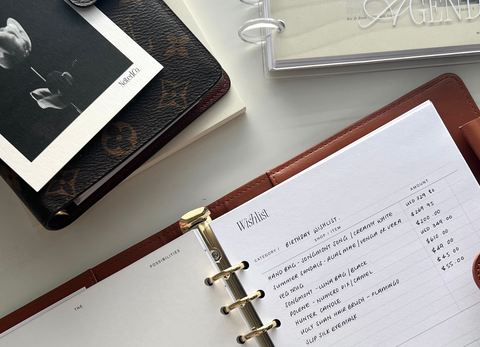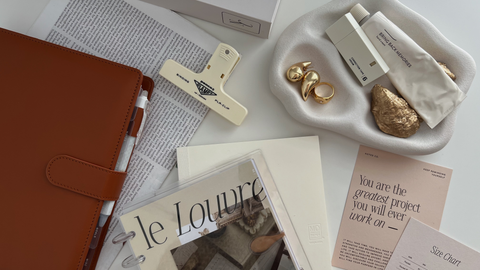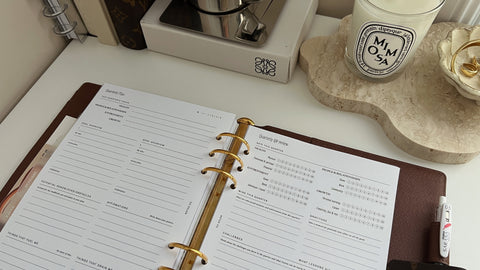September is a particularly exciting month for me. It signals warmer weather, the holidays getting closer, and lots of birthdays, including my own. In the past, I was no stranger to having a frivolous birthday month with lots of shopping to spoil myself along with an excessive number of dinners to celebrate with different groups people. As I get older, I’ve noticed just how much my priorities have shifted. I’d rather keep the celebrations low key with the people who matter most and spoil myself with one or two considered purchases that bring me joy.
In a world where consumption is at an all time high, driven by the constant allure of new products, trends that we can’t possibly keep up with, the temptation to make impulsive purchases is hard to fight, and finding a way to make considered purchases is more challenging than ever. Falling into the trap of overconsumption, cluttering our lives with items that bring fleeting satisfaction and stretch our budgets is an effortless task.
So I wanted to pass on some practices I’ve implemented to help with this problem, that you can easily do as well with pen and paper. I want to talk about wishlisting, why it works and how it’s changed the way I spend.

I’m sure like me, being on social media, you’re constantly subject to marketing, advertisements, and content that makes you want things you didn’t even know existed, let alone now NEED. After seeing the item a few more times, seeing influencers use it, you’re now convinced you need this product in your life. When this happens, the most important thing to do is nothing! You need to slow down the purchasing cycle by inputting a delay / ‘cooling-off’ period between the desire and action. I’ve found that creating a wish list really helps slow this process down and these are the steps I personally take.
1. Add the item to my wishlist
I make sure to create a category for my item, or add it to an existing one. This helps me understand if I am wanting an excessive amount of things in a particular category and I need to dial it down. I also note down the shop and how much the item costs. This creates a reference point, as prices can change and if the item goes on sale eventually, I’ll know by how much.
2. Research
I take my time reading and watching reviews on YouTube. I look into more affordable alternatives, or where I can purchase the item at a discount should I end up wanting to buy it. I take the time to carefully consider the pros and cons. If I do find an alternative, or decide the item isn’t for me, I’ll cross it off my list.
3. Wait for a sale
I wait for a big sale period where most brands will be discounted, like mid year sales, Black Friday, Amazon Prime day etc. I’ll go back and reference my wishlist during these periods, which prevents me from adding random things to my cart just because it’s on sale.
4. Shopping during sales
So when the item finally goes on sale, I don’t immediately add the item to cart and check-out. The chaos and urgency created during these sales period are designed to encourage spending. So I actually take the time to think about it some more, and go back to my pros and cons list. I really genuinely think about how the product fits into my lifestyle, or how often I will use the item to make sure it’s cost per use is high. And sometimes, I take too long to make a decision, and the product sells out. Oftentimes when this happens, I realise it doesn’t actually bother me that much which means I didn’t want it that badly anyway, so I’ve just saved myself some money. Other times (rarely), I’m left feeling like It was such a missed opportunity, and I keep thinking about the item which means when it gets restocked (and it will), I should purchase it then, throwing in a bit of delayed gratification.

In the past, it only took me a couple of days or weeks to buy something after I’ve seen it on social media, and now it takes me months. I find myself feeling more fulfilled because I feel really happy about my purchases. I use my items as I intended them to be used, instead of feeling the regret of buying something that feels like a colossal waste of money because I didn’t think it through thoroughly.
The most important takeaway is to simply slow down. We’ve included a wishlist freebie insert for our email subscribers to help you create a pros and cons list to slow down the purchasing process. You can find the link in your emails. We also have printed wishlist inserts to help you create categorised lists. I hope these easy to action tips have been helpful, particularly as we head into big sale periods and the holiday season.





Comments (3)
Is this still available to download?
Beautiful designs , functional and chic ! thank you very much
I love this idea. This is a great blog, keen to follow for more great articles and tips. I love the flexibility of inserts and planning purchases would save me a lot of money. :)